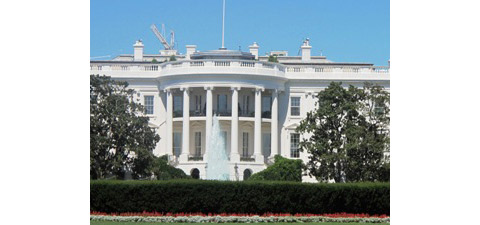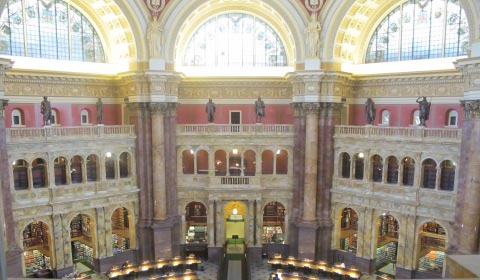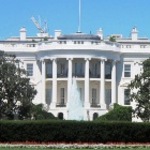Courtesy of My Generation.
It was designed as a capital city, it specialises in awe-inspiring buildings and it’s full of bureaucrats, but JESMA MCGILL found Washington DC has a surprisingly easy vibe.

Approaching Washington by air, the first super-building to catch our eye was the Pentagon, and that isn’t surprising. It’s the largest office block in the world and 25,000 military bureaucrats work there.
The public was allowed to visit certain areas around the Pentagon before 9/11, but now only those on official business can get a look-in. Grey and appropriately bunker-like, it wasn’t on my list of places to go, anyway.
We stayed in the Washington Hilton at Du Pont Circle, now owned by former basketball player Magic Johnson. The hotel has another claim to fame: it’s here that John Hinkley took a shot at President Ronald Reagan in 1981. It appears Hinkley, a former actor, was attempting to impress another actor, Jodie Foster. As they say, only in America.
A conscious President Reagan was rushed to hospital, wheeled into the operating theatre, and is reported to have said to the surgeon: “I hope you’re a Republican.” To which the surgeon replied: “Mr President, today we’re all Republicans.”
Du Pont Circle has a great selection of restaurants, cafes and possibly one of the best bookshops in the world – Kramerbooks & afterwords. Open 24 hours on Saturday and Sunday, there’s a bar and café and the staff are easy to spot – they have ‘Book Whore’ printed on their shirts.
We enjoyed dinner one night at the Italian La Tomate on Connecticut Ave and later discovered that a teenage Chelsea Clinton enjoyed her first date there. The restaurant was closed to the public for the duration and 20 secret service personnel kept watch over the First Daughter while she dined with her friend.
A domestic affair with a twist hit the news while we were in town – the refurbishment of the Oval Office. The New York Times ran two pages on the story with many commentators calling the re-do dull. The Husband said the article was trite and distracting; I agreed – and read every word. At least the First Household went for a modest spruce-up during the recession and if I were living there, I’d be thinking: “You just can’t win.”
A desk (a gift from Queen Victoria), and curtains chosen by the previous tenants (the Bush family), survived the makeover. A commissioned rug sporting quotes from former presidents was added and thought twee; two new fawn sofas were described as boring and functional; two new lamps with dark blue bases received the thumbs up; as did the modern coffee table by a New York designer.
Even switching the floral arrangement to a bowl of fruit drew comment: one decorator claimed it was thoughtful to provide something edible in cash-strapped times; another wondered whether anyone would chomp into an apple in front of the President.

Before 9/11, 10,000 tourists were welcomed through the White House each day, but in the post 9/11 era, visiting the White House for most people means gazing at the imposing structure from a distance or watching a video at the White House Visitors’ Centre down the road. At present, 1000 people are permitted through daily and if we’d been organised we could have had a peek too.
If you’re keen to cross the threshold of one of the world’s most photographed addresses, contact the New Zealand Embassy in Washington six months before departure and your request just may be granted. www.nzembassy.com/usa
Being up close, in person to Capitol Hill is a buzz. As one of the most visible symbols of Western democracy, this area encompasses the US Capitol Building, Library of Congress and the Supreme Court. Some 20,000 people are employed around this landmark and the mind boggles at the scale of the Christmas parties.
We found our way from the Capitol building along the underground walkway (very West Wing), to the Library of Congress – another stunning edifice, built in 1800 as a research library for the legislature. Thomas Jefferson added a lot of his personal library to the collection, keen that the nation’s law-makers have a broad knowledge.
Some congressmen thought Jefferson was overdoing his emphasis on information and I bet those same philistines would be surprised to see what a fantastic resource the library has become.
After spending a morning with the bureaucrats, we visited the superb National Art Gallery and unfortunately only one Smithsonian museum – the National Air and Space Museum. (The Husband chose that.) With 19 other Smithsonian galleries and museums in town covering all fields in interest, we needed another three days to see them.
Then it was time to pay our respects to some great Americans. We visited the Jefferson Memorial, the Lincoln Memorial and the site where Martin Luther King made his famous “I have a dream,” speech. From there we gazed down the Reflection Pool towards the Washington Monument, and visited the nearby Vietnam Veterans Memorial. This one is staggering, with row upon row of names etched into granite – the 58,229 men and women who lost their lives in the war.
In somber mood, we thought about four leaders assassinated for their vision and commitment to their country: Abraham Lincoln shot in 1865 for working to outlaw slavery; during the era of the Civil Rights movement a century later, the golden boys of the modern American dream, the Kennedy brothers, were shot dead – John F Kennedy in Dallas in 1963 and Robert F Kennedy in Los Angeles in 1968; and in that same year, Martin Luther King was shot dead in Memphis, Tennessee. Tragic times indeed.
Thoughts of the Kennedys drew us to Georgetown, a gentrified suburb where many famous politicians have lived over the years. Feeling parched in the hot, late afternoon, we came across Martin’s Tavern, a popular watering hole for political types.
The barman pointed out the Proposal Booth where JFK proposed to Jackie Bouvier. The booth was empty and beckoning, so we slipped in, ordered the restaurant’s famous meat loaf and had our photo taken in the exact same spot where the famous glamour couple formalised their relationship.
Our photos were awful (I blame the light), the meatloaf mediocre and the service lacklustre. The place was clearly coasting on past glories but still worth a visit. For those not so keen on romance, there’s the Richard Nixon Booth, the Truman Booth and the LBJ Booth for the enjoyment of a libation or two.
The only negative comment I heard about Washington came from a local who’d recently visited Europe: “This place looks like Disneyland,” he said. And I didn’t ask any of the city’s 10,000 homeless for their opinion, several hundred of whom sleep in La Fayette Park every night, directly in front of the White House.
It’s staggering that the city’s most disadvantaged can gaze at the best house in the best street from their makeshift bed of an evening: although Washington is the nation’s showcase, there’s no escaping that underneath, it’s just like most other towns, with issues of poverty, crime and unemployment.
On a lighter yet hopefully not insensitive note, Washington is a tourist’s dream. Entry into many of the magnificent buildings, museums and galleries is free and the Smithsonian Insitiution is one of the most inspired series of collections in the world. Plus it’s really easy to find a bathroom, and that pretty much compensates for having our bags checked just about everywhere we went. That’s post 9/11 for you.
Side Note: How Washington DC Was Made
The capital of the USA was created following a deal in 1790 – and strategically placed between the North and the South – when the 16km square District of Columbia was ceded to the federal government by Virginia and Maryland.
In 1791, Major Pierre Charles L’Enfant, a former member of the court of Versailles was asked to design the public face of the capital. Inspired by grand, opulent European styles and Greek and Roman classical influences, he came up with the US Capitol Building and the White House.
The road to completion of the nation’s showpieces wasn’t smooth, however. The egos of architects and politicians, money worries, construction issues and attacks by the British halted construction, but determination to see the country’s grand symbols of political unity completed eventually won out.
Capitol Hill’s first foundation stone was laid in 1793 and the first congress met in part of the completed building in 1800. The British burnt the Capitol down in 1814, but it was rebuilt soon after and a dome added for good measure. In 1850 further expansion was required and a larger dome created. Construction continued throughout the Civil War, and eventually, Freedom, the 5.8m statue that soars above the Washington skyline today, was affixed to the top as the building’s crowning inspiration.
The history of the White House is somewhat surprising too: what appears to be a sacred and grand old home has been vandalized, burnt, nearly pulled down twice and many tenants have claimed it’s not that comfortable.









Join the Discussion
Type out your comment here:
You must be logged in to post a comment.